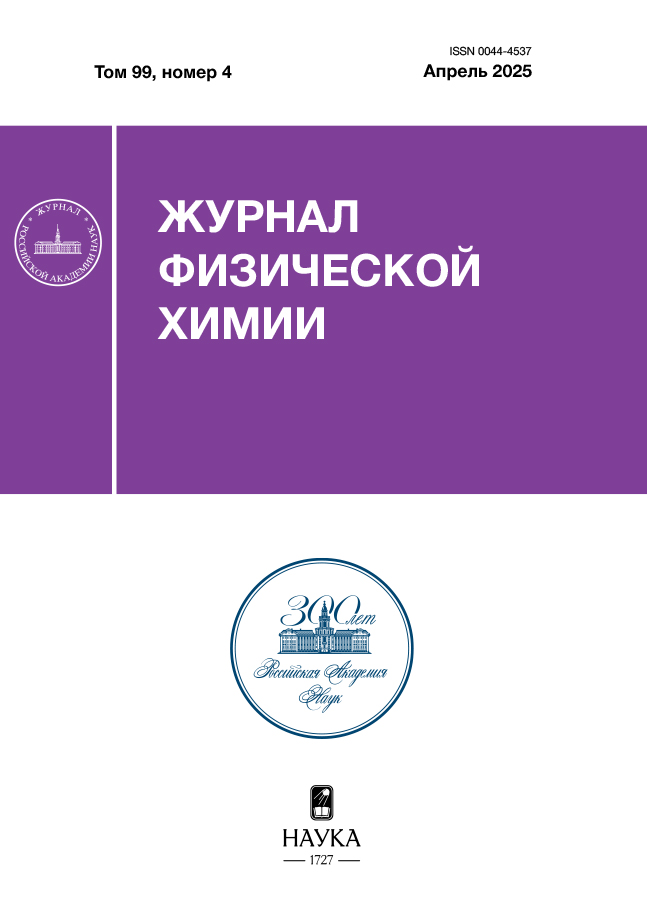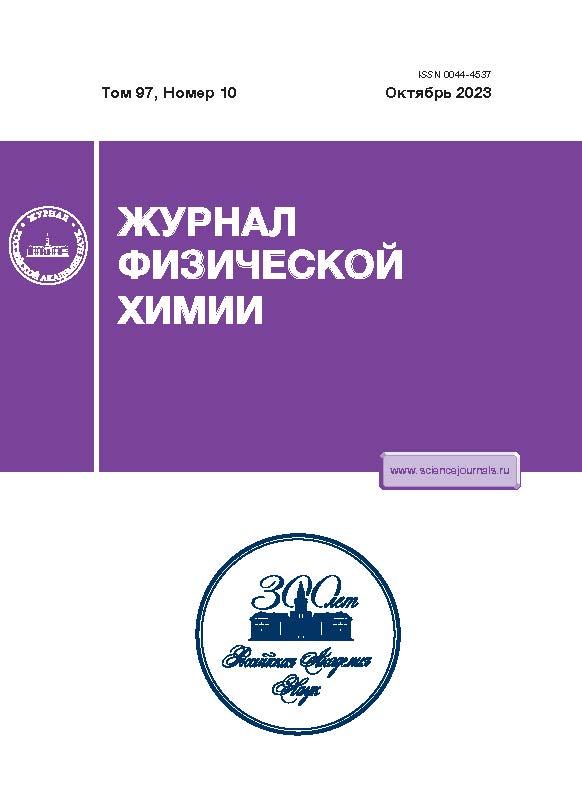Ab initio-реконструкция межатомного потенциала для основного электронного состояния молекулы CO
- Авторы: Мешков В.В.1, Пазюк Е.А.1, Столяров А.В.1, Усов Д.П.2, Рыжков А.М.2,3, Савельев И.М.2, Кожедуб Ю.С.2, Мосягин Н.С.3, Шабаев В.М.2,3
-
Учреждения:
- Московский государственный университет имени М.В. Ломоносова, Химический факультет
- Санкт-Петербургский государственный университет, Физический факультет
- Петербургский институт ядерной физики им. Б.П. Константинова НИЦ “Курчатовский институт”
- Выпуск: Том 97, № 10 (2023)
- Страницы: 1441-1446
- Раздел: СТРОЕНИЕ ВЕЩЕСТВА И КВАНТОВАЯ ХИМИЯ
- Статья получена: 26.02.2025
- Статья опубликована: 01.10.2023
- URL: https://permmedjournal.ru/0044-4537/article/view/668648
- DOI: https://doi.org/10.31857/S0044453723100163
- EDN: https://elibrary.ru/PVMOAL
- ID: 668648
Цитировать
Полный текст
Аннотация
Многоконфигурационными методами самосогласованного поля (MC-SCF), конфигурационного взаимодействия (MR-CI+Q) и усредненного функционала связанной пары (MR-ACPF) вычислена энергия основного состояния молекулы монооксида углерода на подробной сетке и в широком интервале межъядерных расстояний 0.1 < R(Å) < 17.0. Скалярная релятивистская поправка систематически учтена с помощью эффективного гамильтониана Дугласа–Крола–Гесса (DKH) второго порядка. Квантово-электродинамическая (QED) поправка к масс-инвариантному потенциалу оценена впервые с помощью модельного одноэлектронного оператора, который строился независимо для каждого атома. Расчеты проводились с использованием семейства корреляционно-согласованных aug-cc-pwCVnZ-DK (n = 3, 4, 5) базисов для обоих атомов, с последующей экстраполяцией к полному базису в рамках эмпирической трехточечной схемы. Результирующий потенциал оказался очень близок к его полуэмпирическому аналогу вблизи положения равновесия и на диссоциационном пределе. Ожидается, что наиболее значимое уточнение ab initio потенциала соответствует промежуточной области 2.0 < R(Å) < 4.5, где надежные экспериментальные данные пока отсутствуют.
Об авторах
В. В. Мешков
Московский государственный университет имени М.В. Ломоносова, Химический факультет
Email: avstol@phys.chem.msu.ru
Россия, Москва
Е. А. Пазюк
Московский государственный университет имени М.В. Ломоносова, Химический факультет
Email: avstol@phys.chem.msu.ru
Россия, Москва
А. В. Столяров
Московский государственный университет имени М.В. Ломоносова, Химический факультет
Email: avstol@phys.chem.msu.ru
Россия, Москва
Д. П. Усов
Санкт-Петербургский государственный университет, Физический факультет
Email: avstol@phys.chem.msu.ru
Россия, 199034, Санкт-Петербург
А. М. Рыжков
Санкт-Петербургский государственный университет, Физический факультет; Петербургский институт ядерной физики им. Б.П. Константинова НИЦ “Курчатовский институт”
Email: avstol@phys.chem.msu.ru
Россия, 199034, Санкт-Петербург; Россия, 188300, Гатчина
И. М. Савельев
Санкт-Петербургский государственный университет, Физический факультет
Email: avstol@phys.chem.msu.ru
Россия, 199034, Санкт-Петербург
Ю. С. Кожедуб
Санкт-Петербургский государственный университет, Физический факультет
Email: avstol@phys.chem.msu.ru
Россия, 199034, Санкт-Петербург
Н. С. Мосягин
Петербургский институт ядерной физики им. Б.П. Константинова НИЦ “Курчатовский институт”
Email: avstol@phys.chem.msu.ru
Россия, 188300, Гатчина
В. М. Шабаев
Санкт-Петербургский государственный университет, Физический факультет; Петербургский институт ядерной физики им. Б.П. Константинова НИЦ “Курчатовский институт”
Автор, ответственный за переписку.
Email: avstol@phys.chem.msu.ru
Россия, 199034, Санкт-Петербург; Россия, 188300, Гатчина
Список литературы
- Combes F. // Annu. Rev. Astron. Astrophys. 1991. T. 29. C. 195.
- Meshkov V.V., Ermilov A.Yu., Stolyarov A.V. et al. // J. of Quantitative Spectroscopy and Radiative Transfer. 2022. V. 280. № April. P. 108090.
- Medvedev E.S., Meshkov V.V., Stolyarov A.V., Gordon I.E. // Journal of Chemical Physics. 2015. V. 143. № 15. P. 154301.
- Gordon I.E., Rothman L.S., Hargreaves R.J. et al. // J. of Quantitative Spectroscopy and Radiative Transfer. 2022. V. 277. P. 107949.
- Meshkov V.V., Stolyarov A.V., Ermilov A.Yu. et al. // Ibid. 2018. V. 217. P. 262.
- Пазюк Е.А., Пупышев В.И., Зайцевский А.В., Столяров А.В. // Журн. физ. химии. 2019. Т. 93. С. 1461.
- Ushakov V.G., Meshkov V.V., Ermilov A.Yu. et al. // Physical Chemistry Chemical Physics. 2020. V. 22. № 21. P. 12058.
- Коновалова Е.А., Демидов Ю.А., Столяров А.В. // Оптика и спектроскопия. 2018. Т. 125. № 4. С. 451.
- Pyykko P., Dyall K.G., Csaszar A.G. et al. // Phys. Rev. A. 2001. T. 63. № 2. C. 024502.
- Werner H., Knowles P., Knizia G., Manby F. et al. M-OLPRO, version 2010.1, a package of ab initio programs. 2010; http://www.molpro.net.
- Bussery B., Rosenkrantz M.E., Konowalow D.D., Aubert-Frécon M. // Chem. Phys. 1989. V. 134. P. 7.
- Rosenkrantz M.E., Bohr J.E., Konowalow D.D. // Theor. Chim. Acta. 1992. V. 82. P. 153.
- Peterson K.A., Dunning T.H. // J. Chem. Phys. 2002. V. 117. P. 10548.
- Shabaev V.M., Tupitsyn I.I., Yerokhin V.A. // Phys. Rev. A. 2013. T. 88. № 1. C. 012513.
- Shabaev V.M., Tupitsyn I.I., Yerokhin V.A. // Comp. Phys. Communications. 2015. T. 189. C. 175.
- Titov A.V., Mosyagin N.S. // Intern. J. of Quantum Chemistry. 1999. T. 71. № 5. C. 359.
- Saue T. // J. Chem. Phys. 2020. T. 152. № 20. C. 204104.
- Oleynichenko A.V., Zaitsevskii A., Mosyagin N.S. et al. // Symmetry. 2023. T. 15. № 1. C. 197.
Дополнительные файлы















